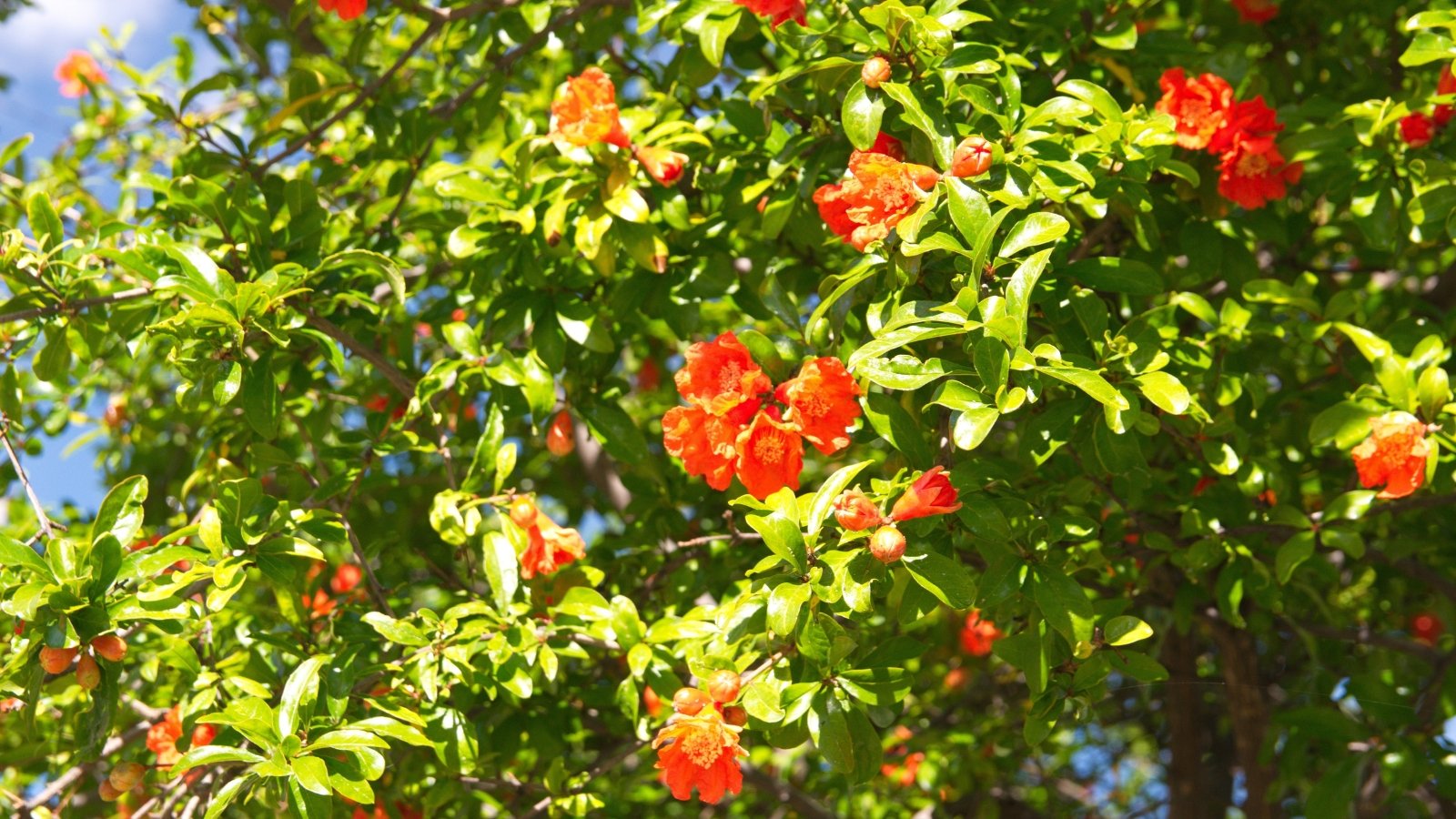[ad_1]
In case you contemplate yard orchards, apples, peaches, or blueberries may come to ideas. Nevertheless have you learnt you might effectively develop pomegranate bushes outdoors in zones 8 and above? With the suitable care and endurance, you might benefit from homegrown variations of these distinctive, juicy fruits.
Nonetheless, pomegranate bushes don’t on a regular basis bear fruit. They might produce flowers that drop sooner than setting fruit, or they may not flower the least bit. Each technique, dealing with an absence of pomergranates is perhaps irritating.
It’s helpful to have a look at some widespread the reason why your pomegranate tree isn’t producing. After learning by way of the guidelines, you might resolve if any of the reasons apply to your state of affairs. To get you started, I’ll introduce seven doable causes for an absence of fruit and supply choices to help restore the difficulty.
Tree Is Too Youthful
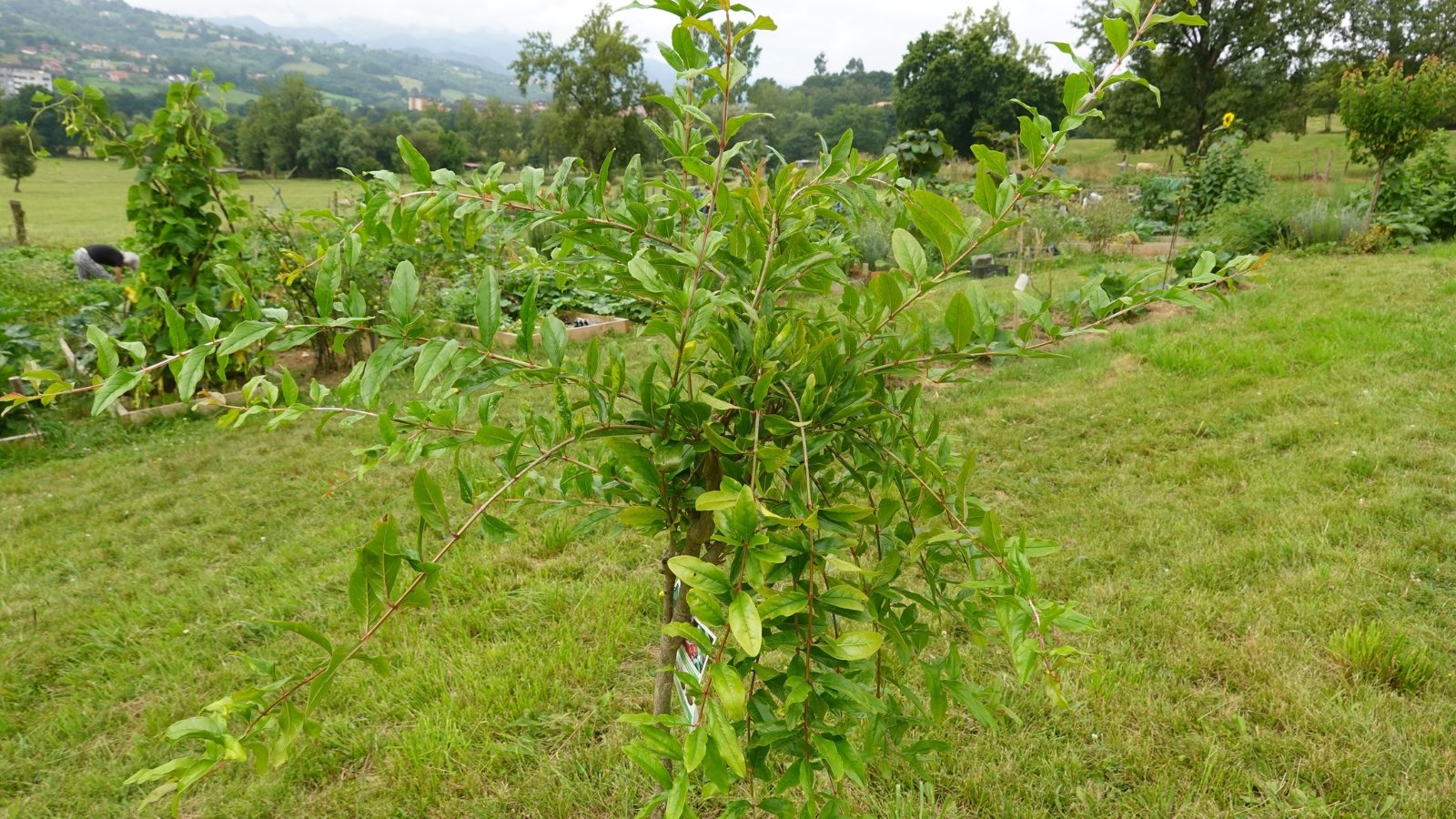

Since pomegranate bushes develop as woody perennials, they don’t produce flowers of their first 12 months of growth. As an alternative, they spend their vitality rising a sturdy root system and forming lush foliage. After just some years of enchancment, the vegetation can begin exerting vitality on flower and fruit manufacturing.
In case your tree is youthful and seems healthful no matter an absence of pomergranates, it’s probably too immature to flower. Most pomegranate bushes will begin producing free throughout the second or third 12 months after planting. Fairly a couple of components affect when a tree begins flowering; the tree’s dimension at planting, the native climate, daylight, and water present all affect when flowers variety.
You additionally wants to keep in mind that bushes will produce a small amount of flowers and fruit of their first 12 months of producing. In case you occur to solely spot a handful of flowers, don’t fret! The bushes will produce additional flowers and fruit as they mature. Nonetheless, in case your plant isn’t producing by 12 months 5, there’s probably one different set off accountable.
Not Adequate Mild
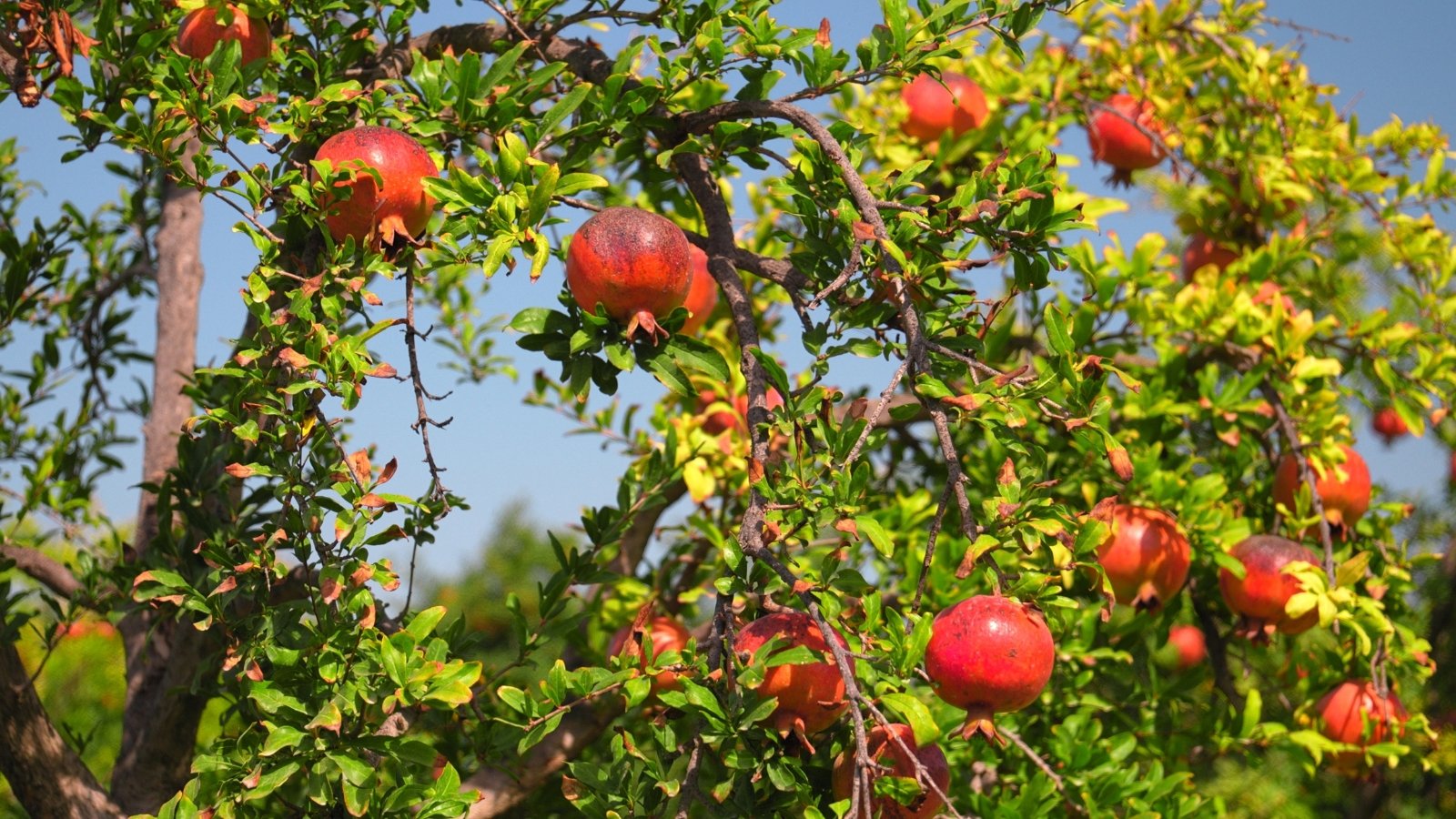

Pomegranate bushes thrive in full photo voltaic. They’ll tolerate just some hours of morning or afternoon shade nevertheless require on the very least eight hours of direct gentle to remain healthful. A shortage of sunshine may end up in stunted growth, elevated susceptibility to sickness, leggy vegetation, and/or an absence of flowers.
In case your plant continues to be youthful and likewise you’ve realized you planted it in an house that is too shady, you might dig up the plant and switch it to a additional applicable location. The proper time to transplant is the late winter or early spring—you want to intention for the time merely sooner than bud break occurs.
This time is sweet for two causes. First, the tree could be a lot much less susceptible to emphasise for those who occur to dig it up whereas it’s dormant, and the spring warmth will encourage the tree to settle into its new dwelling.
When searching for an appropriate location, look at the sunshine at completely totally different situations of the 12 months. As a result of the photo voltaic’s angle changes all yr lengthy, an house would possibly get hold of solely an hour of shade within the summertime nevertheless six hours throughout the winter. The proper location is often an open house free of obstructions or the south-facing side of a home or setting up.
Not Adequate Water


Although pomegranates are acknowledged for his or her drought tolerance, they nonetheless require widespread irrigation to thrive. An ample moisture present is especially important throughout the first few years of a tree’s growth and in the midst of the months of fruit enchancment.
Since pomegranates produce flowers throughout the spring and ripe fruits throughout the fall, it’s best to pay explicit consideration to summer season irrigation. Scorching, dry local weather can shortly set off drought stress, which could end in flower drop or inhibit pomergranate enchancment.
When pomegranates lack water, they shut their stomata (leaf pores) to protect moisture. The closed pores maintain water throughout the vegetation, nevertheless the vegetation moreover experience trouble cooling themselves.
Researchers have found that pomegranate bushes exhibit decreased vegetative growth and fruit yields when water availability falls beneath the proper stage. In case you occur to underwater the bushes for quite a few years, the implications can compound and end in weak bushes with poor canopies.
So, how sometimes do it’s important to water your vegetation to take care of them healthful? Consultants on the Faculty of Florida recommend irrigating deeply about as quickly as per week when conditions are dry. It’s important to take care of your irrigation schedule as fixed as doable all via the rising season. A sudden enhance in water after a dry spell can lead fruits to separate open.
You probably can water the bushes by hand with a watering can or hose. Nonetheless, placing in drip irrigation in your bushes may make it less complicated to water. You possibly can even set the drip system on a timer to verify your plant receives a relentless present of water.
Too So much Water
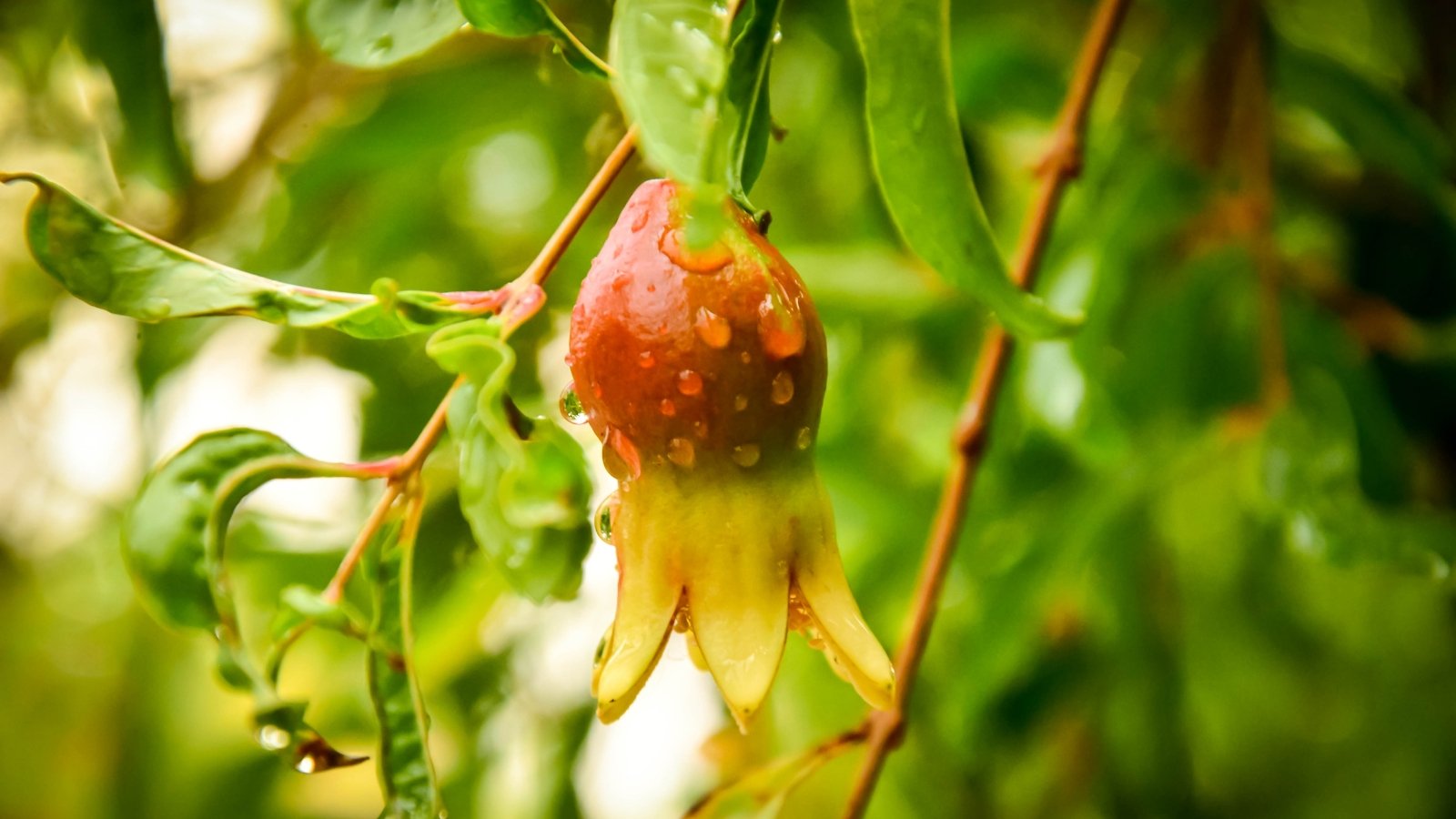

Like all vegetation, pomegranate bushes need water to thrive. Nonetheless, an extreme quantity of water could trigger merely as lots stress as not enough. This stress may end up in points with flower manufacturing, fruit set, and maturation, all of which could end in an absence of pomegranates.
So, how lots water is an extreme quantity of? rule of thumb is to water your vegetation deeply on the very least as quickly as per week in the midst of the primary rising season. If it rains sufficiently, you might skip your weekly watering. You possibly can even decrease irrigation throughout the late fall by way of early spring; all through this time, you solely should water if the soil is dry.
Along with noting how sometimes you water, you additionally wants to try the soil and drainage. Pomegranates can develop in soil extreme in clay and sand, along with one thing in between. Nonetheless, the bushes require sufficient soil drainage to remain healthful. In case you occur to find that water is forming puddles, it’s best to work to reinforce the drainage.
Sadly, enhancing soil drainage is hard after your pomegranate is throughout the flooring. Nonetheless, you might alter the soil sooner than planting. Aerating the underside with a digging fork or broadfork will improve drainage. You possibly can even mix in compost to elevate the extent of soil pure matter and improve compacted soils.
Poor Pollination
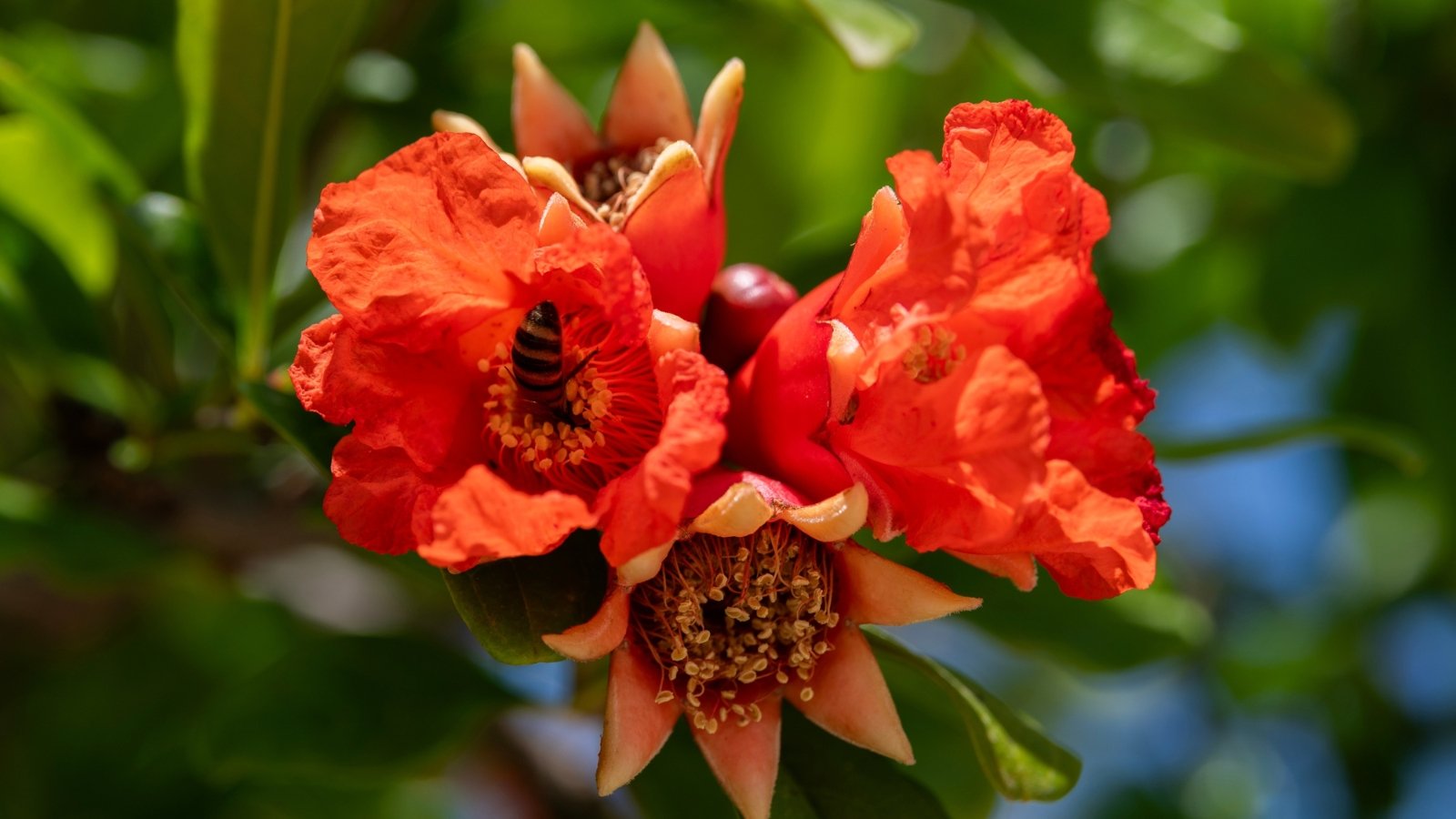

In case your pomegranate plant produces a great deal of flowers nevertheless no fruit, it could very nicely be a sign of improper pollination. Pomegranate flowers are typically self-pollinated, which means the female parts of a flower get hold of pollen from the an identical flower. Nonetheless, cross-pollination moreover sometimes occurs in pomegranates. This sort of pollination occurs when pollinators like hummingbirds or bees swap pollen from one flower to a unique.
Although cross-pollination isn’t essential, it does enhance yield. Resulting from this truth, an absence of pollinators may end up in restricted pomergranate manufacturing.
One resolution to enhance cross-pollination is to hold additional pollinators to your yard. Providing a water provide, rising quite a few flowering vegetation, and avoiding broad-spectrum pesticides will all encourage pollinators to go to your yard. Planting native vegetation will even current habitat and meals for useful pollinators like butterflies and bees.
In case you occur to’re decided, you might hand pollinate your pomegranate flowers. This contains using a small paintbrush to modify the pollen from one flower’s stamens to a unique’s stigma. Whereas this will likely more and more sound troublesome, it merely contains gently swirling the paintbrush in the midst of one open flower after which ending the an identical course of on one different flower.
Improper Pruning


Usually, pomegranates don’t require heavy pruning. Eradicating lifeless and crossing branches is all the vegetation wish to keep healthful. Nonetheless, you possibly can even prune your pomegranate to encourage it to develop as a trailing shrub or upright tree.
It would not matter what sort of pruning you undertake, stay away from eradicating an extreme quantity of picket immediately. Not solely will aggressive pruning stress the plant, nevertheless it could nicely moreover take away fruiting picket.
Pomegranates variety flowers and fruit on second-year picket, so eradicating an extreme quantity of woody growth can take away all second-year picket. In case you occur to try this, you’ll end up with no flowers and fruit!
You’re Rising a Flowering Pomegranate
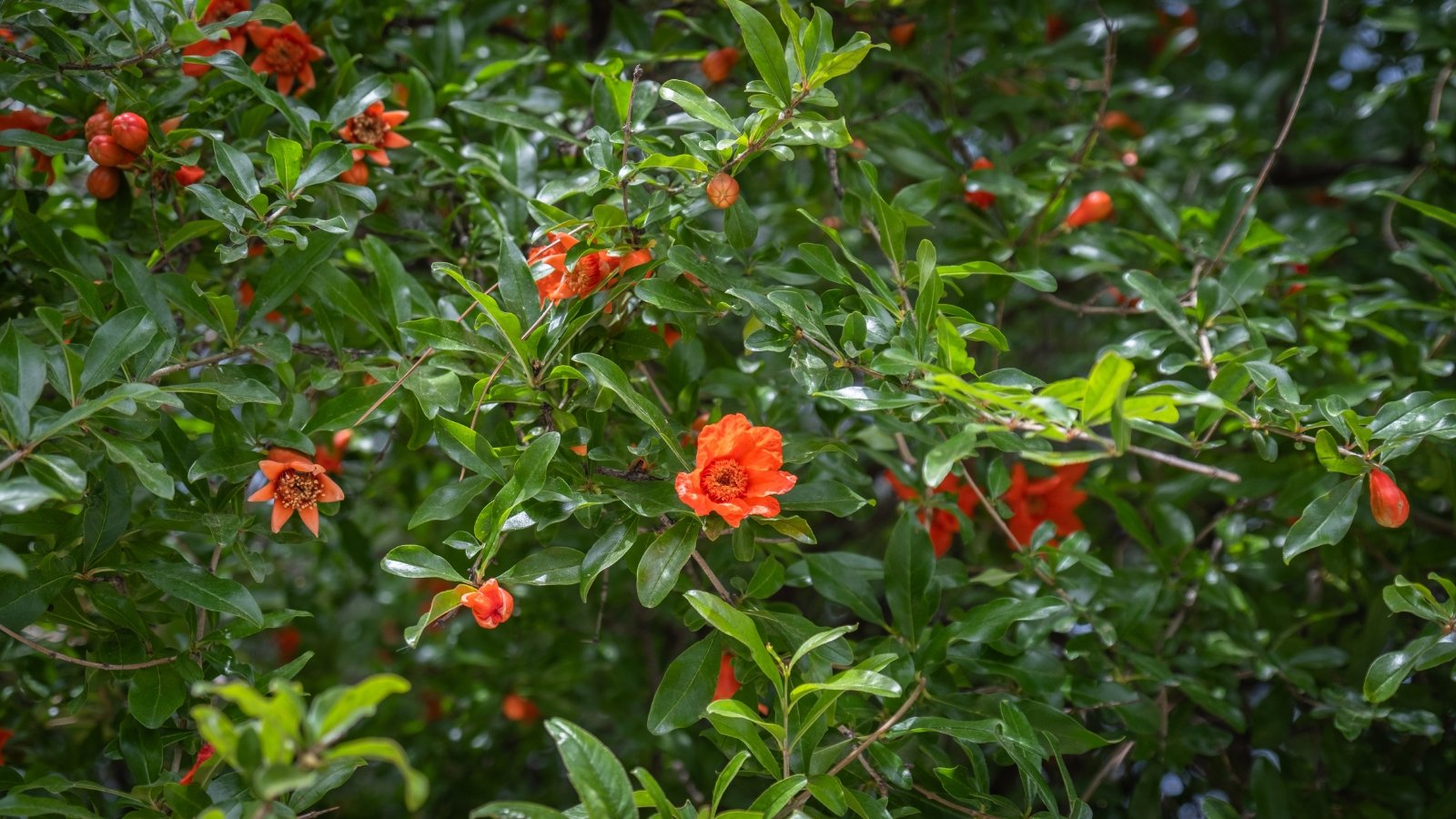

In case you occur to’re fascinated with together with a pomegranate to your yard, it is advisable to be acutely aware there are two important types: fruiting and flowering. Whereas every types will produce huge, pretty flowers, the flowering varieties will not be going to supply fruits. Resulting from this truth, don’t merely seize a pomegranate plant from a nursery and anticipate it to fruit.
In case you want to benefit from pomegranate fruits, it’s best to select a time-testing fruiting choice. ‘Unbelievable’ and ‘Texas Pink’ every produce delicious crimson fruits full of juicy arils. You probably can anticipate to start out harvesting the fruit two to three years after planting.
[ad_2]
